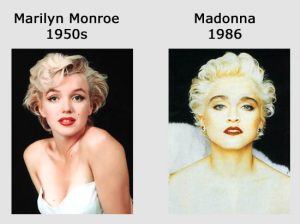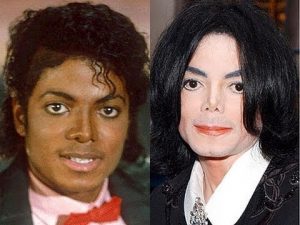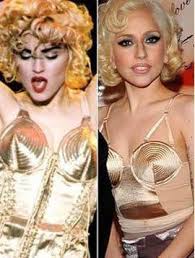Discussion response for Sturken and Cartwright’s “Postmodernism, Indie Media, and Popular Culture”:
- Postmodernism asserts that identity is performed, and the physical body is imagined to be easily transformed. Give an example of a public figure incorporating these postmodern ideals into their identity, and the processes by which they do this.
In modernism, the image of the body is viewed as stable and fixed, meaning a person lives with the identity (gender, race, sexuality) they were born with. Opposite to that, postmodernism perceives identity as “fragmented, pluralistic, and multifaceted.” Additionally, postmodern has been used to describe individuals that generate their identities through a myriad of media images and texts and creating simulacra (a hyperreal identity that doesn’t connect back to the real person, but instead their media image seen as more real). As a result, there is the idea that people perform their identities, rather than being fixed with what they were born with.
Putting on and off a performing identity or image has been a characteristic of pop artists since the 1980s with the emergence of music videos and a greater sense of visual performance. Sturken and Cartwright highlight Madonna as one of the first to popularize parodying and adopting styles from others. Her image was based on the Madonna, Marilyn Monroe, and a number of alternative style and image transformations throughout her career. Another popular singer, Michael Jackson transformed his identity as “a way of nostalgic reference to past icons” by undergoing a series of surgeries and treatments to change his physical appearance. Both of these two vocal artists’ built themselves as images, and transformed their looks according to a familiar cultural referent. While Madonna changed her appearance through make-up and different clothing choices, Michael Jackson went further in erasing his physical body of black identity and changed to extremely pallor skin. Changing one’s identity can range from cross-dressing, colored lenses, hair dying, make-up to plastic surgery, prosthetics, and even further with idea of cyborgs, half human half robot.
(Warning: image source leads to an anti-Madonna blog…)
But when focusing on one postmodern artist, Lady Gaga was at the forefront of my mind. In one quote Lady Gaga says, “The statement is that I’m not one icon. I’m every icon. I’m an icon that is made out of all the colors on the palette at every time. I have no restrictions.” Not only does her words seem to explicitly state her postmodern mindset, but her actions follow fellow postmodern artists before her. Like Madonna and Michael Jackson, Lady Gaga has referenced and remixed icons – Madonna even being one of them.
Besides the daring outfits of Lady Gaga, there are other aspects of postmodernism beyond transforming the physical body that she incorporates, truly defining her as a postmodern artist. Beginning with her stage name “Lady Gaga”, she is rarely addressed by her birth name Stefani Germanotta. By keeping her personal and celebrity status separate, the identity of Gaga has become multifaceted. Her pop star media image is simulacra, complete with the extravagant outfits and visuals she is recognized for (source). Furthermore, Lady Gaga continuously expressed the message of being yourself, emphasized with her song “Born This Way” (a song that also has speculation about being similar to Madonna’s Express Yourself song). This message rejects traditional structure and social norms of modernism (source). By incorporating strong postmodern ideals into her image, Lady Gaga’s identity is a memorable one.


